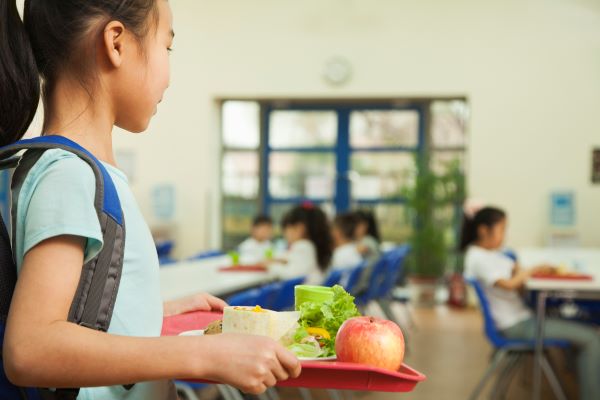Eight (healthy!) things to know about school lunch and breakfast programs
If you imagine the school cafeteria as you remember it when you were a student, then you may be surprised by the facts about today’s school nutrition programs.

- Your school nutrition program must offer vegetables in a variety of colors each week. Specific amounts of dark green, red/orange, and starchy vegetables must be offered to all students. Beans are required to make a weekly appearance as well.
- Your school nutrition program offers almost exclusively whole grain products. In almost all cases, pizza crust, French toast sticks, pancakes, waffles, bread sticks, and pasta are made with whole grains.
- Your school nutrition program purchases as much locally grown fruits and vegetables as possible. For example, many districts purchase lettuce, peppers, and tomatoes locally when available. Some even purchase locally grown beef and pork. Many schools also grow and use their own vegetables.
- Students who eat school meals have the opportunity to get at least four of their “5-a-day” at school. A wide variety of fruits and vegetables are available, and in many cases, students can have unlimited quantities.
- Your school nutrition program operates under strict federal and state guidelines. Cafeterias have a state review every three years to ensure their meals meet nutrition standards. They also have annual health inspections.
- Your school nutrition program must keep track of everything—what days each student ate, what the menu was, how much food was purchased, how it was served, what the temperature of the meal was, how each student’s lunch got paid for—and maintain those records for up to three years.
- Your school nutrition program must have its own budget, separate from the school. From this budget, they pay salaries and benefits, buy food, purchase and repair equipment, and buy paper and other non-food supplies.
- Research from the Robert Wood Johnson Foundation found that the nutritional quality of school meals has been increasing steadily since 2006-2007. Additionally, a 2019 USDA study showed that the nutritional quality of meals is up from a score of 58 to 81, kids are not throwing away more food, and lunch participation is higher in schools with healthy meals.
Sources:Let’s Go!, Action for
Healthy Kids, and
“Indiana Producer Farm to School Success Stories” from the Indiana Department
of Education
Topics: Uncategorized
Subscribe for more
Want more ideas for healthy schools, workplaces, child care providers, and families? Subscribe to our blog for weekly tips delivered right to your inbox!
Go for Zero: Cutting Back on Sugary Drinks NEXT »
3 Ways to Get 5 a Day
